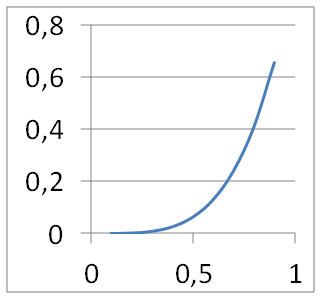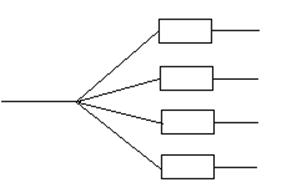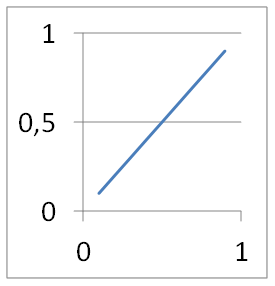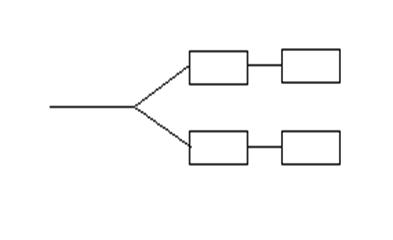What is the efficiency factor. efficiency of the internal combustion engine. How much is approximately equal, as well as power in percent. Determination of efficiency
Calculation of the efficiency of the machine unit
Machine unit - A set of engine mechanisms, transmission mechanisms and mechanisms of a working machine.
Let us consider a separately established motion. For each complete cycle of this movement, the increment in kinetic energy is zero:
∑(mv2)/2-∑(mv02)/2=0 (1)
Mechanical efficiency (efficiency) is the ratio of the absolute value of the work of the forces of production resistance to the work of all driving forces for a cycle of steady motion. Accordingly, the formula can be written:
Energy Diagram and Law of Conservation of Energy
If you don't want it, you will inevitably be left behind. When people like Florian Schumacher constantly improve, the gap between those who refuse technology and those who use it widens. Digital split, call criticism. On the other hand, Florian Schumacher appreciates the incorruptibility of technology.
Determination of efficiency
People are no longer present in this concept. When social categories disappear, efficiency becomes the defining criterion. And when health data allows people to be classified according to their performance, inequalities become even more pronounced.
K.P.D. is determined by the formula: η=Ап. s/Hell (2)
Where: Aps - the work of production forces;
Hell is the work of driving forces.
The ratio of work AT of non-production resistances to the work of driving forces is usually denoted by Ψ and called the coefficient of mechanical losses. Accordingly, the formula can be written as follows:
η \u003d AT / AD \u003d 1 - Ψ (3)
Efficiency as the basis of our prosperity
Work efficiency, energy efficiency, time efficiency is the mantra of managers in our highly developed market economy. Efficient production is the basis of our prosperity. Only effective farmland management has created a secure nutrient base. An efficient state is a prerequisite for peace and a functioning economy. Thanks to industrialization and effective healthcare, we have achieved an unprecedented level of prosperity.
The less non-productive resistances in the mechanism of work, the lower its loss coefficient and the more perfect the mechanism in terms of energy.
It follows from the equation: since in no mechanism the work of AT is not the production forces of resistance, friction forces (frost friction, sliding friction, dry, semi-dry, liquid, semi-liquid), practically cannot equal zero, then the efficiency cannot equal zero .
We live in houses of efficiency, we preach energy and resource efficiency. We bring learning efficiency to our children. Even our football is effective. We want to achieve the highest possible minimum use of time and resources, which is why we are taught. Work, leisure, even holidays are carefully planned.
Efficiency has become a defining factor in our lives. How can we work even more efficiently? On a hill at the edge of the city of Lemgo stands the factory of the future. A human-sized robot installs components into a frame. It works as one of the first industrial robots without a protective cage, next to its human counterpart. Its shell is buffered with foam, so it won't hurt anyone.
From formula (2) it follows that the efficiency can be equal to zero if
This means that the efficiency is equal to zero if the work of the driving forces is equal to the work of all the forces of non-productive resistances that are present in the mechanism. In this case, movement is possible, but without doing any work. This movement of the mechanism is called idle movement.
New Efficiency: Components interact with robots via chip
Ceiling cameras record all the movements of people and cars in the hall and send them to the central computer. Thus, every step of production can be recorded and analyzed. All components were implanted with a microchip. This way you communicate directly with the machines that make them. In the control room, behind a glass window overlooking the hall, the engineer can follow every step of production at the touch of a button. The software calculates how much time and energy is required for production.
Efficiency cannot be less than zero, since for this it is necessary that the ratio of work AT / IM be greater than one:
AT / BP >1 or AT > BP
From these inequalities it follows that if the mechanism that satisfies the specified condition is at rest, then real motion cannot occur. This phenomenon is called Self-braking mechanism. If the mechanism is in motion. Then, under the influence of non-productive resistance forces, it will gradually slow down its progress until it stops (slows down). Consequently, obtaining a negative value of efficiency in theoretical calculations is a sign of self-braking of the mechanism or the impossibility of movement in a given direction.
Where today there are information disruptions in production and some things are not yet available in digital form, it always indicates that there is inefficiency there and that we can optimize this with digitization. With the support of the Federal Ministry of Economics, medium-sized companies from the region can obtain information about product digitization here.
It is still in its infancy, but one thing is clear: the Four Zero Zero industry will change the entire economy. “In my opinion, industry 0 is divided into three parts: we have smart products, smart products, and digital business models.” This means: industrial production is becoming more and more flexible. Customers who want to buy a table lamp can order a copy of their choice online. The team goes directly to the machine, which automatically creates the desired product.
Thus, the efficiency of the mechanism can vary within:
0 ≤η< 1 (4)
From formula (2) it follows that the efficiency Ψ varies within: 0 ≤η< 1
The relationship of machines in the machine unit.
Each machine is a complex of mechanisms connected in a certain way, and some complex ones can be divided into simpler ones, then having the ability to calculate K.P.D. simple mechanisms or having at their disposal certain values of K.P.D. simple mechanisms, you can find a complete K.P.D. machines, made up of simple elements in any combination of them.
Factory boss spends 15 minutes on his cars
You will be able to produce even better products even cheaper and even faster. The world of work will also change. According to a study by the World Economic Forum, digitalization is destroying five million jobs around the world. Ax: "I just spoke to an entrepreneur who came to his factory and it was time for his production to run without people, and he said that he was glad to spend fifteen minutes in a dark factory."
Abandoned factory: utopia or nightmare? Economist and philosopher Christine Ax oscillates between skepticism and hope. As always with technology, it depends. "I'd like to reply with a quote from William Morris: we should use machines where they make sense, and we shouldn't use them where they don't make sense."
All possible cases of transfer of motion and force can be divided into cases: series, parallel and mixed connection.
When calculating K.P.D. connections, we will take an aggregate consisting of four mechanisms of which: N1=N2=N3=N4, η1=η2=η3=η4=0.9
We accept the driving force (BP) = 1.0
Consider K.P.D. serial connection.
The British philosopher and engineer William Morris demanded as early as a century ago that technology in the work process should not primarily serve efficiency, but above all the worker. This aspect also plays a crucial role in the digital factory of the century. Jaspernate: Although last years many projects have been very technologically influenced, there are now more and more important aspects of work design, technology adoption and compatibility with technology.
Jurgen Jaspernate doesn't believe in the desert factory. At least when assembling complex devices, robots will not be able to replace people. And when simple actions are captured by machines, then again people with their cognitive and creative abilities are in demand. Therefore, jobs will always be in the industry with four zeros, of which Jaspernate is convinced. But the tasks are getting more demanding.
 The first mechanism is set in motion by driving forces that do the work of Hell. Since the useful work of each previous mechanism, spent on production resistances, is the work of the driving forces for each subsequent one, then K.P.D. η of the first mechanism is:
The first mechanism is set in motion by driving forces that do the work of Hell. Since the useful work of each previous mechanism, spent on production resistances, is the work of the driving forces for each subsequent one, then K.P.D. η of the first mechanism is:
Shaping soon instead of managing or processing?
Therefore, the person will continue to be in demand. And more and more in demand. This is where the story changes. For many years Insurance companies recorded a sharp increase in absenteeism due to burnout. Matthias Burisch considers the figures to be skeptical. However, there are good reasons to increase the number.
Today half of the workforce thrice
"There's a lot of work in a lot of industries, so there's a rule of thumb: half the workforce does three times what it was ten years ago, and if it doesn't and you can't leave, it's a trap."Second - η \u003d A2 / A1
Third - η \u003d A3 / A2
Fourth - η \u003d A4 / A3
Overall efficiency η1n=An/Ad
The value of this efficiency factor can be obtained by multiplying all individual efficiency factors η1, η2, η3, η4. We have
η=η1*η2*η3*η4=(A1/AD)*(A2/A1)*(A3/A2)*(A4/A3)=An/AD (5)
Thus, the overall mechanical efficiency of the series connection of mechanisms is equal to the product of the mechanical efficiency of the individual mechanisms that make up one common system.
But the working atmosphere, especially in listed corporations, is capable of promoting disease. In companies that have a problem with burnout, what they call the American “short termitism” prevails, therefore, is fixed in the following quarterly figures.
Therefore, workers must work more efficiently. Matthias Burisch believes that the workload in industrial societies has reached its limit. Health insurance funds are required to spend more money on the prevention of health in companies. The fact that things have already gotten this way is indicative of the urgency of the problem. In addition, they must prepare a report, the so-called "risk assessment".
η=0.9*0.9*0.9*0.9=0.6561=Ap. With.
Consider K.P.D. parallel connection.
 When mechanisms are connected in parallel, there may be two cases: from one source of motive power, power is transmitted to several consumers, several sources feed one consumer in parallel. But we will consider the first option.
When mechanisms are connected in parallel, there may be two cases: from one source of motive power, power is transmitted to several consumers, several sources feed one consumer in parallel. But we will consider the first option.
According to a recent company survey, only half of all employers comply with this requirement. Burish: "It means little, but even this elementary tool, which is required by law, is not used, it is not yet expensive enough." Duek: They don't look at the optimal, but they think that the maximum they can get is always the best, which is a mistake in management, and if the job is more demanding, the optimal stress level should be less.
"Efficiency is yesterday's concept"
In his current book, Wacky, Duek engages managers who want to boost their business and therefore often achieve the opposite. Design Thinking, the school of creative problem solving in a team, is now very much in vogue. But the main problem is elsewhere, Dueck says. Optimization in enterprises has reached its limits. Efficiency is yesterday's concept.
With this connection: Ap. s.=A1+A2+A3+A4

If K.P.D. each mechanism has the same then and the power will be distributed equally to each mechanism: ∑КI=1 then ⇒ К1=К2=К3=К4=0.25.
Then: η=∑Кi*ηi (6)
η =4(0.25*0.90)=0.90
Thus, the overall K.P.D. parallel connection as the sum of the products of each individual section of the unit chain.
"Industrialization takes existing things that already work and makes them efficient, but today's challenge is to create something completely new." Inefficient work, but innovative thinking is required. As a mathematician, his job was to optimize production processes. He knows the structures in corporations and is convinced that innovative thinking has no chance in a performance-oriented work climate.
When you read somewhere who has good idea, it's usually in the shower, but performance managers hold meetings and then brainstorm - there's no new idea for a born business, but it's done somewhere else. Duek is convinced that companies face the question of existence. On the one hand, digitization challenges many business models. But global competition will force many companies to rethink. Philosopher Christine Tox goes even further. She believes that industrialized societies have reached a point where they cannot go any further.
Consider the efficiency of a mixed compound.
 In this case, there is both serial and parallel connection of mechanisms.
In this case, there is both serial and parallel connection of mechanisms.
In this case, the power Ad is transferred to two mechanisms (1.3), and from them to the rest (2.4)
Because η1*η2=A2 and η3*η4=A4, and K1=K2=0.5
 The sum of A2 and A4 is equal to Ap. With. then from formula (1) one can find the K.P.D. systems
The sum of A2 and A4 is equal to Ap. With. then from formula (1) one can find the K.P.D. systems
We use too many resources, we destroy a lot of landscapes and nature in the depletion of these resources, we have a biodiversity problem, we have a serious problem with soil conservation, with soil erosion, and we know from the scenarios that have been calculated It will be very difficult if we will continue this way, food will become much more expensive, there will be problems with the world's food, the whole issue of plastic in the sea will depend on what we cannot imagine Rod: And the question arises: why?
"Optimum is rarely reached in biology"
A wonderful day at work begins with Thomas Speck walking through the Freiburg Botanical Gardens. As his director, he enjoys the privilege of having his office in the middle of a garden. Thomas Speck teaches botany and biology at the University of Freiburg. He is also a bionic scientist, studying the processes and principles that originated in nature and developing technical solutions for industry. For example, the principle of self-repair. Together with colleagues from the field of plastics research, he has developed materials that can be repaired on their own.
η=К1*η1*η2+К2*η3*η4 (7)
η=0.5*0.9*0.9+0.5*0.9*0.9=0.405+0.405=0.81
Thus, the overall K.P.D. mixed connection is equal to the sum of the products of the mechanical coefficients connected in series multiplied by the part of the driving force.
Ways to improve efficiency
Now the main efforts of engineers are aimed at increasing the efficiency of engines by reducing the friction of their parts, fuel losses due to incomplete combustion, etc. The real possibilities for increasing the efficiency here are still large, the actions are equal to: The actual value of the efficiency due to various kinds energy losses are approximately equal to 40%. Maximum efficiency - about 44% - have engines internal combustion. The efficiency of any heat engine cannot exceed the maximum possible value of 40-44%.
Bacon: "The optimal is that which is seldom attained in biology." Thomas Speck knows that anyone who is oriented towards evolution must restrain their need for optimization. Must say goodbye to perfection. And evolution took at least a few million years.
The reason is that almost all biological structures are multifunctional, which means that they can never reach the optimal goal in evolution, but at the same time they must meet different goals. If one were to improve one property, the other would deteriorate at the same time. This optimum is called Pareto Optimum or Pareto Efficiency, named after the economist Vilfredo Pareto.
Conclusion: when considering each connection of mechanisms separately, we can say that the highest efficiency of a parallel connection is equal to η=0.9. Therefore, in aggregates, you should try to use a parallel connection or as close as possible to it.
Efficiency calculation - 4.0 out of 5 based on 3 votes
Probably, everyone wondered about the efficiency (Coefficient of Efficiency) of an internal combustion engine. After all, the higher this indicator, the more efficient the power unit works. At the moment, the electric type is considered the most efficient, its efficiency can reach up to 90 - 95%, but for internal combustion engines, whether it be diesel or gasoline, to put it mildly, it is far from ideal ...
To be honest, modern engine options are much more efficient than their counterparts, which were released 10 years ago, and there are a lot of reasons for this. Think for yourself before the 1.6-liter option, it gave out only 60 - 70 hp. And now this value can reach 130 - 150 hp. This is painstaking work to increase efficiency, in which each "step" is given by trial and error. However, let's start with a definition.
- this is the value of the ratio of two quantities, the power that is supplied to the crankshaft of the engine to the power received by the piston, due to the pressure of the gases that were formed by igniting the fuel.
In simple terms, this is the conversion of thermal or thermal energy that appears during the combustion of the fuel mixture (air and gasoline) into mechanical energy. It should be noted that this has already happened, for example, in steam power plants - also the fuel, under the influence of temperature, pushed the pistons of the units. However, the installations there were many times larger, and the fuel itself was solid (usually coal or firewood), which made it difficult to transport and operate it, it was constantly necessary to “feed” it into the furnace with shovels. Internal combustion engines are much more compact and lighter than steam engines, and fuel is much easier to store and transport.
More about losses
Looking ahead, we can confidently say that the efficiency of a gasoline engine is in the range of 20 to 25%. And there are many reasons for this. If we take the incoming fuel and recalculate it as a percentage, then we kind of get “100% of the energy” that is transferred to the engine, and then the losses went:

1)Fuel efficiency . Not all fuel burns out, a small part of it leaves with exhaust gases, at this level we already lose up to 25% of efficiency. Of course, now fuel systems are improving, an injector has appeared, but it is far from ideal.
2) The second is heat losses.And . The engine warms up itself and many other elements, such as radiators, its body, the liquid that circulates in it. Also, part of the heat goes away with the exhaust gases. For all this, up to 35% loss of efficiency.
3) The third is mechanical losses . ON all kinds of pistons, connecting rods, rings - all places where there is friction. This includes losses from the load of the generator, for example, the more electricity the generator produces, the more it slows down the rotation of the crankshaft. Of course, lubricants have also stepped forward, but again, no one has yet completely defeated friction - another 20% loss
Thus, in the dry residue, the efficiency is about 20%! Of course, there are stand-out options from gasoline options, in which this figure is increased to 25%, but there are not so many of them.

That is, if your car consumes 10 liters of fuel per 100 km, then only 2 liters of them will go directly to work, and the rest are losses!
Of course, you can increase the power, for example, by boring the head, we are watching a short video.
If you remember the formula, you get:

Which engine has the highest efficiency?
Now I want to talk about gasoline and diesel options, and find out which one is the most efficient.
To put it in simple terms, and not to go into the jungle of technical terms, then - if we compare two efficiencies - the most efficient of them, of course, is diesel, and here's why:
1) A gasoline engine converts only 25% of energy into mechanical energy, but a diesel engine converts about 40%.
2) If you equip the diesel type with a turbocharger, then you can achieve an efficiency of 50-53%, and this is very significant.

So why is it so effective? It's simple - despite the similar type of work (both are internal combustion units), a diesel engine does its job much more efficiently. It has greater compression, and the fuel ignites from a different principle. It heats up less, which means it saves on cooling, it has fewer valves (savings on friction), and it also doesn’t have the usual ignition coils and spark plugs, which means it doesn’t require additional energy costs from the generator. It works at lower speeds, there is no need to crank the crankshaft wildly - all this makes the diesel version a champion in efficiency.
About Diesel Fuel Efficiency
From a higher value of the efficiency factor, fuel efficiency also follows. So, for example, a 1.6-liter engine can consume only 3-5 liters in the city, in contrast to the gasoline type, where the consumption is 7-12 liters. A diesel engine has a lot, the engine itself is often more compact and lighter, and also more environmentally friendly lately. All these positive aspects are achieved thanks to greater value, there is a direct relationship between efficiency and compression, look at a small plate.

However, despite all the advantages, it also has many disadvantages.
As it becomes clear Engine efficiency internal combustion is far from ideal, so the future is definitely electric options - it remains only to find efficient batteries that are not afraid of frost and hold a charge for a long time.
This concludes, read our AUTOBLOG.
